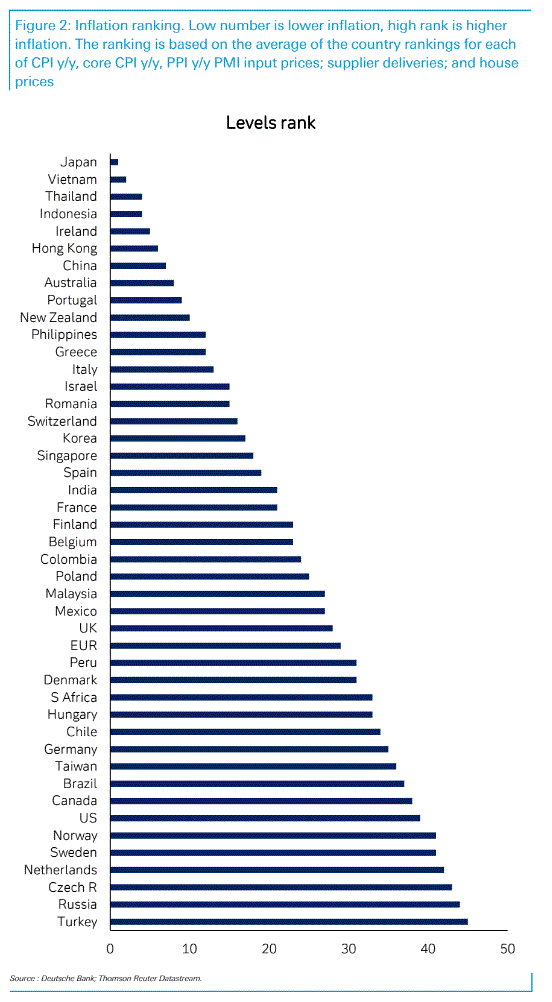Deutsche with the note that should make AUD bulls shiver:
For global markets, the US April CPI was by far the most eye-catching inflation release, but there are enough indications from individual country data and now the latest PMI reports, that bottleneck price pressures are a global phenomenon. Which begs a few questions: what are the relative magnitudes of inflation pressures experienced by each country in absolute terms and relative to each other; and, what other regional inflation patterns are in evidence? To get an overview of what is going on globally, the heatmaps below include some of the most generic price data that is widely available for country comparisons – CPIheadline and core, PPI, PMI -input prices, PMI supplier deliveries, and a broad house price measure (see Figure 1). Each of these indicators were ranked (by column), and the average of the ranking for the six indicators for each country was itself ranked to give an aggregate indicator of inflation levels (last column of Figure 1, and, Figure2). As per Figure 1 and 2, the US with relatively high inflation levels, ranks 39thoutof 45 countries, while Japan with low inflation ranks 1st.
In terms of current inflation, Australia ranks 37th out of the top 45 countries:


